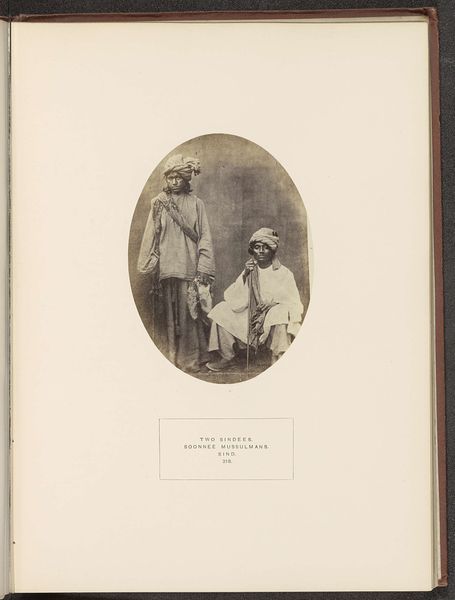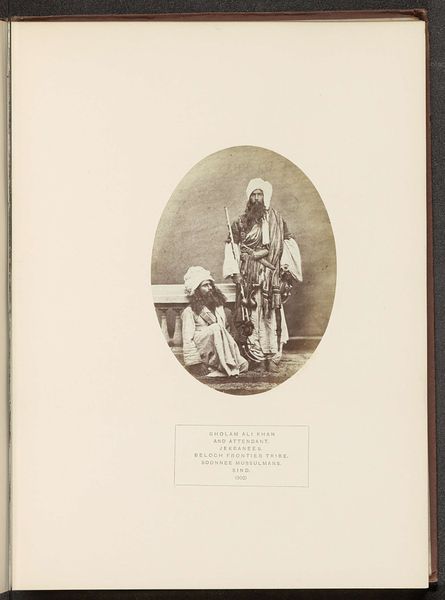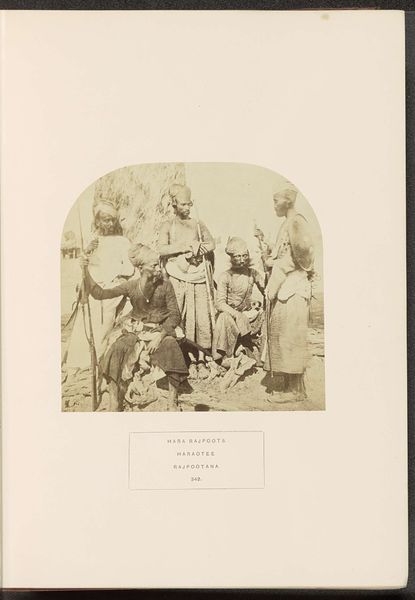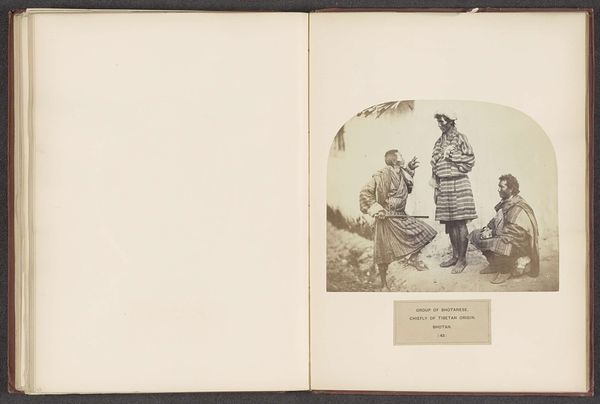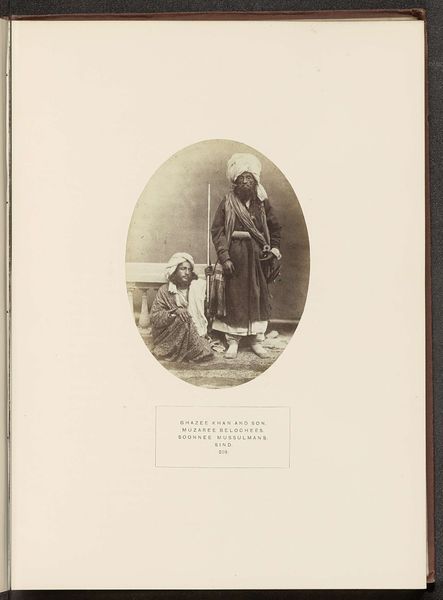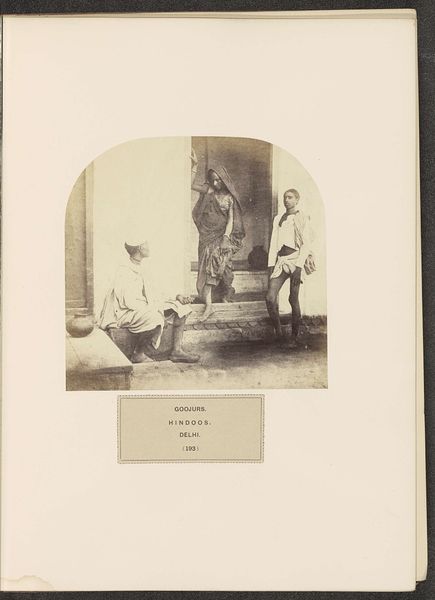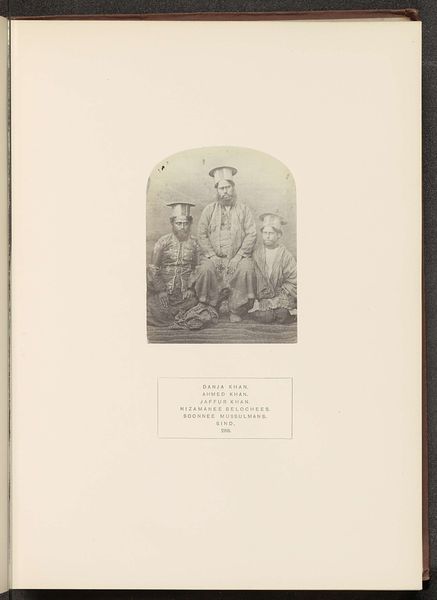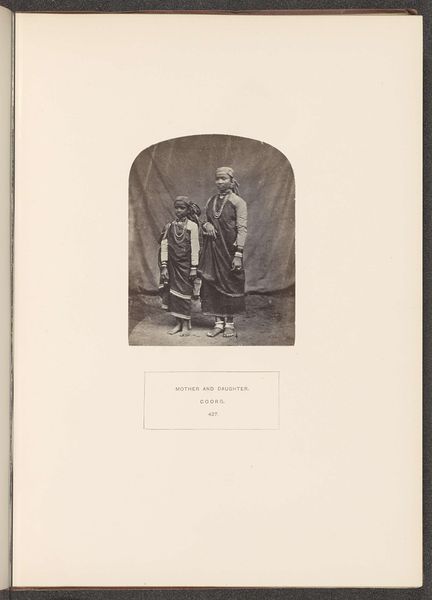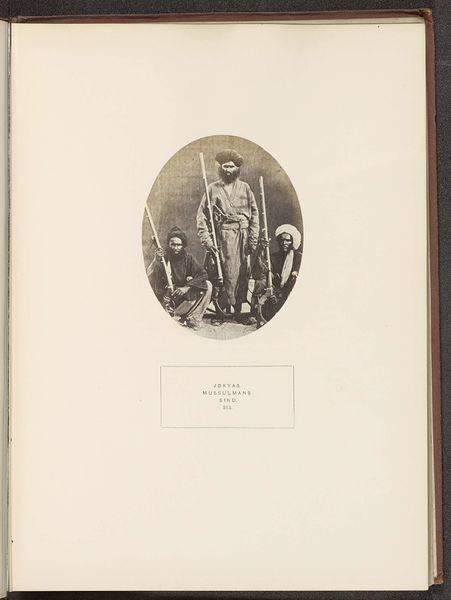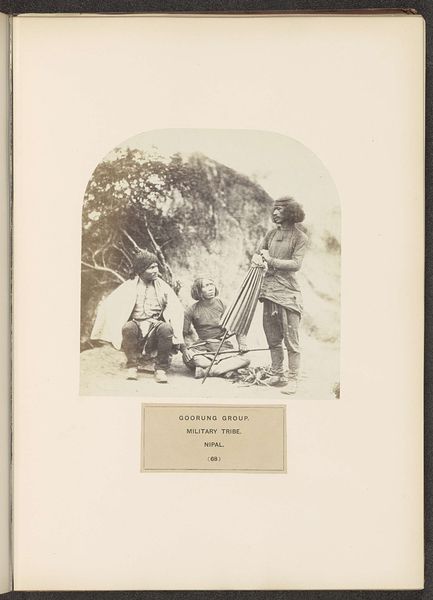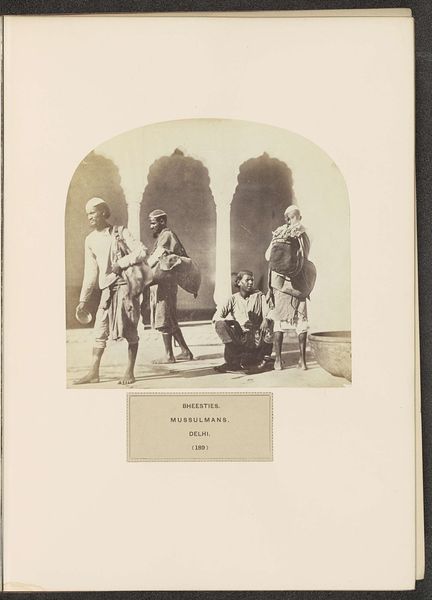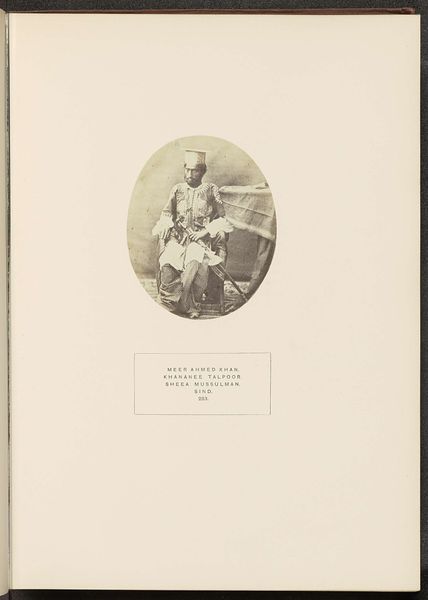
Portret van drie onbekende jagers uit Sindh met een dode vogel en geweren before 1872
0:00
0:00
photography
#
portrait
#
photography
#
orientalism
#
genre-painting
Dimensions: height 146 mm, width 108 mm
Copyright: Rijks Museum: Open Domain
Henry Charles Baskerville Tanner captured this albumen print of three unknown hunters from Sindh with a dead bird and guns. The prominent display of the dead bird, almost as a trophy, has deep roots within the cultural imagination. Consider the vanitas paintings of the Dutch Golden Age, where dead birds often symbolized the transience of life. This motif, however, transcends mere mortality. It speaks to humanity's complex relationship with nature. The hunter's triumph, displayed with such casual pride, evokes the ancient Roman custom of displaying game after the hunt as a testament to skill and provision. Yet, there's an undeniable shift. Here, the bird is not just food; it's a symbol of power, a conquest memorialized in print. This subtle transformation reflects our evolving subconscious relationship with nature, from sustenance to status, echoing through art history and cultural memory. The cyclical nature of symbols reminds us that images never truly die; they transform and resurface, bearing witness to our enduring human drama.
Comments
No comments
Be the first to comment and join the conversation on the ultimate creative platform.
